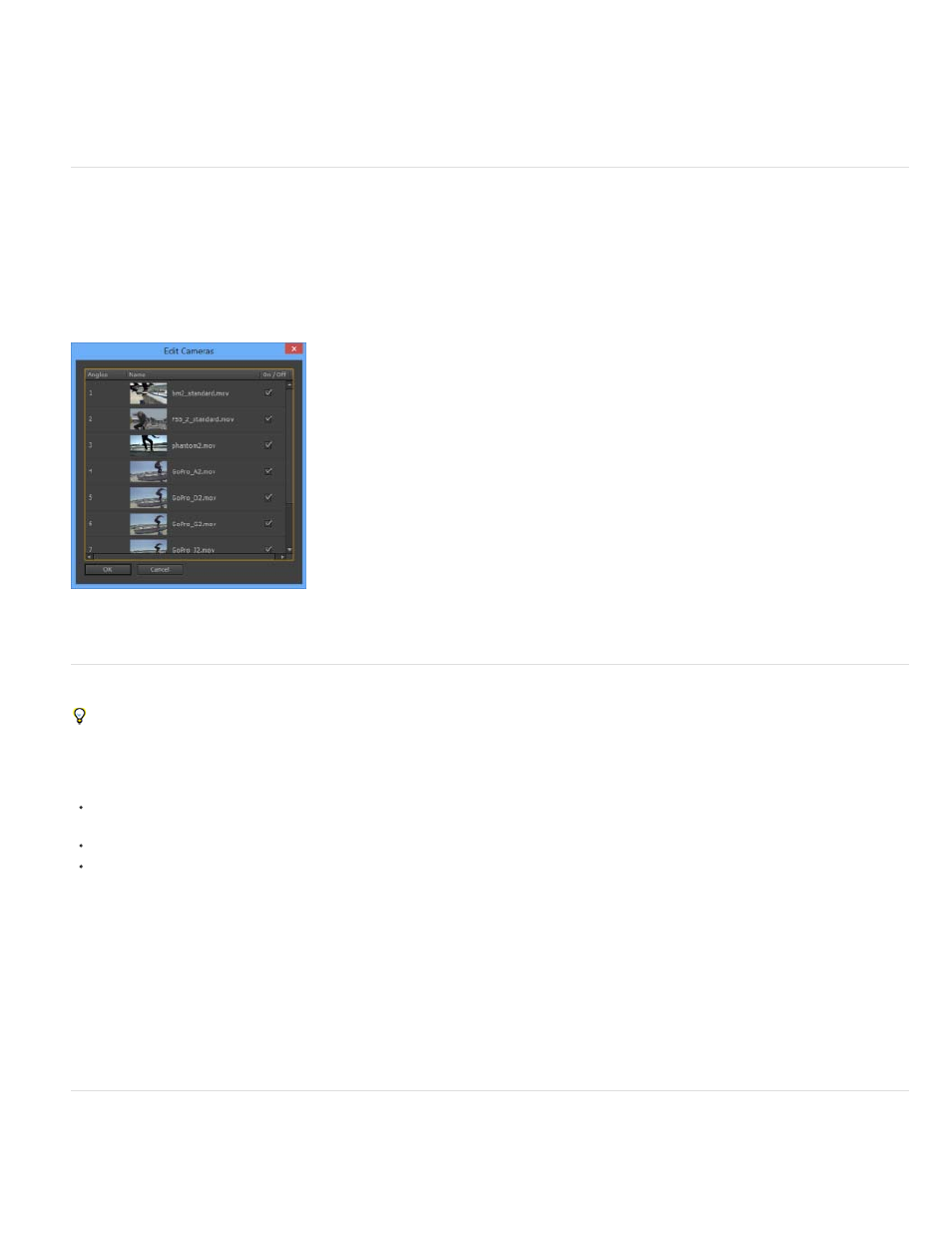Mark clips for synchronization, Import multiclip sequences from final cut pro – Adobe Premiere Pro CC v.7.xx User Manual
Page 69

addition to the default option of enumerated camera names like camera 1, camera 2.
Depending on the Camera Names option that you select, the camera angles are displayed as track names, clip names, or camera numbers in the
Source Monitor. To view the multi-camera sequence in the Source monitor, right-click the sequence and select Multi-camera.
Organize and select camera angles to view in monitor's multi-camera mode
Premiere Pro lets you organize and select the angles to view in the Source Monitor's multi-camera mode.
From the Source monitor's pop-up menu, select Edit Cameras.
In the Edit Cameras dialog box, all the clips are listed in the original order that they were arranged in the sequence tracks. You can drag-and-drop
the clips to change the sequence order. You can also enable or disable the clips by selecting or deselecting them.
Mark clips for synchronization
If clips are synchronized by timecode (
) at the shooting location, you do not need to mark clips for synchronization.
Before creating a multi-camera source sequence, it is important to mark clips for synchronization. Open each clip and then do one of the following
at the sync-point:
Mark an In Point at a sync-point at the beginning of a clip. For example, mark an In point where the
is clapped at the
head of a clip.
Mark an Out point at a sync-point at the end of a clip. For example, mark an Out point where the
clapped at the tail of a clip.
Make a clip marker at a sync-point at any point during a clip. For example, if there is action at any point during a clip that can be used as a
sync-point, like an audio cue, cymbal crash, camera flash, and so on. Rename each marker so that they are identically named for
synchronization. Type the same clip marker name for each clip in the Marker dialog box, and then click OK. (See Add markers in the
Timeline)
Timecode can also be used to synchronize clips, and it does so automatically. However, timecode must be identical on all clips for them to
synchronize properly. If the timecode is identical on all the clips you plan to synchronize, you do not need to mark clips for synchronization. If you
use the hours value in source timecode as a camera designator, select the Ignore Hours option to use only minutes, seconds, and frames to
synchronize clips.
To stamp identical timecode on all clips, you can either record the cameras with
on location, or modify the timecode for
each clip in Premiere Pro. (See Set timecode manually for a clip.).
Import Multiclip sequences from Final Cut Pro
You can export a Multiclip project from Final Cut Pro, and import the Final Cut Pro project XML files into Premiere Pro. In Premiere Pro, the
72